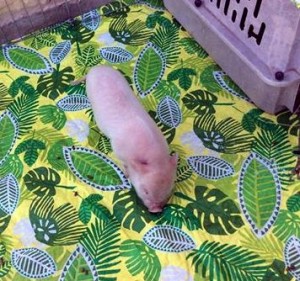So I saw a couple of variations of a news story regarding the home in a teeny town in Oregon which was the location for exteriors in a movie shot at about the time that my daughter was in elementary school. Yes – the simple white frame house on a hill overlooking a Hampton Inn, a major local road, and something of the sea-front; the house featured in the movie The Goonies … a fun and funny kid’s movie, which has lately been headlined because the current owner of same is sick to death of movie fan visitors showing up at the garden gate and being … well, showing up and apparently in herds and a good portion of them being rather invasive, rude and awful. It is the 30th anniversary of the making of that movie, and the surge of visitor interest has become overwhelming, at least as far as the current owner is concerned, although it seems that the administration of the city of Astoria has seized the day and posted signs all over the place, referencing the Goonies House. Well, all props to them, and I am certain that they are reaping some benefit through tourists visiting. I live in a town which boasts two major tourist draws, so I cannot be dismissive of all of that. I also grew up in Sothern California, where seeing a camera crew at work, or recognizing a familiar place in the background of a movie or TV was just part of the charm of living there.
There are lots of houses which were used as exteriors for movies, some of them with every bit as much of a cult following; Ralphie’s house in A Christmas Story, for instance, although in that case, the house itself is now a local museum. The Winnetka house used in Home Alone, and Home Alone 2 is still a private residence and the current owners don’t seem to be particularly bothered by sightseers. The Money Pit mansion seems to be located at the end of a quarter-mile long driveway, which probably helps to keep sightseers at a respectable distance. The house used for exteriors of The Godfather movies is perhaps a little closer to the street, but still … These last three are or were recently on the market; I am certain that whoever purchased them, or is thinking about purchasing them has noted the past use of the property for a movie or movies as just a curious tidbit. But still … When did private property become a public utility?
The comments on the various news stories about the Goonies house are a bit dismaying, to me as a home-owner. The current owner bought the place – which really looks to be quite a modest little hillside cottage with a splendid view – some fifteen years ago. Likely, she viewed it having been used as a movie location as just another curious tidbit; oh, yeah, that’s interesting, right along the lines of having had a now-famous person born there, or having guested George Washington for a night or two. Slap up a historical marker and call it a day; not everyone wants to set up a museum or souvenir shop in Home Sweet Home. A fair number of comments seem to suggest, with various degrees of snideness, that is what the owner should do – but really? Turn your house into a commercial enterprise? Again, when did private property become a public utility? It seems that the owner was quite gracious in earlier years, with a relatively small trickle of Goonie fans, but the trickle has become an ungovernable, unendurable flood. There’s a limit to what the owner of a private home can put up with – and no, selling and moving away (the other snide suggestion) is no solution, either. Hanging up blue tarps and declaring the house closed is a relatively mild response; I am only surprised there isn’t a ten-foot wall, and restricted access at the bottom of the driveway.
By way of decency, one of the stars of the Goonies is asking for consideration on the part of the beleaguered homeowner. Good for him.



Recent Comments